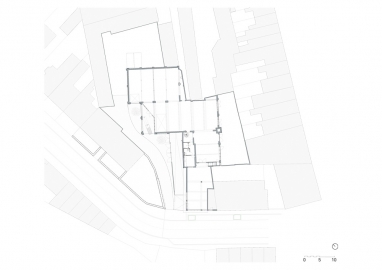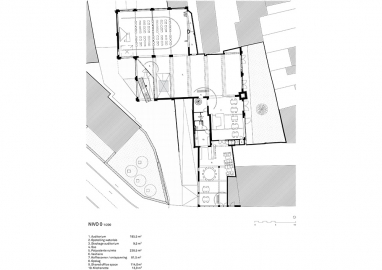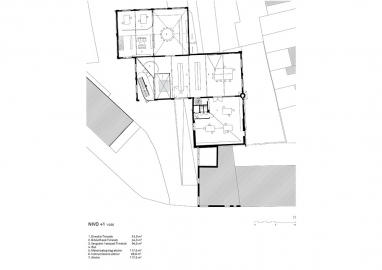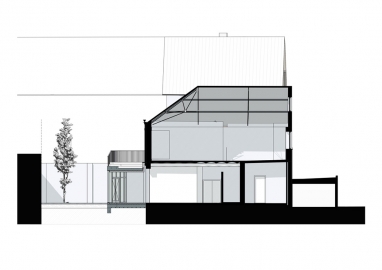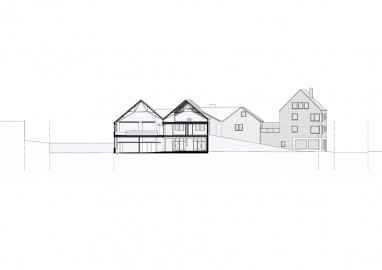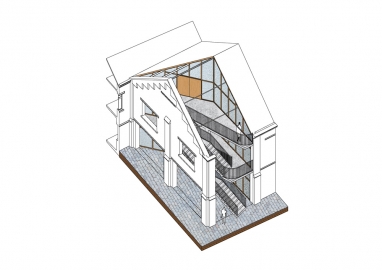Arthouse Timelab
Functionality, to be determined: the design and renovation process of a noodle factory in Ghent (B) for occupancy by artistic organization Timelab.
Timelab is situated near Dampoort station in Ghent. It is an artistic organization that branches out to other organizations in the fields of education, civic participation, and sustainability. Timelab embraces a circular economy perspective which reflects the choice to resettle to an obsoleted vermicelli factory. The 1800m2 polluted factory environment was transformed into a space catering to flexible programming and civic interaction. It has three floors; the ground floor has coworking space for 20 persons, an auditorium, and several reception rooms (total 800m2). The first floor has a library, studios, a prototyping lab, and administrative spaces (400m2). The second floor has an open, polyvalent space for concentrated activities or workshops (300m2). Outside, there is a communal garden. In the long run, 20 garage boxes on the site will be transformed into a park.
Timelab is conceived as a place where new systems of local production and consumption can be tested and implemented. It hosts a variety of activities, projects, artists, and organizations that aim to empower citizens with information, knowledge, and skills to “change the behaviour of the city dweller”. The design project aimed to reactivate a deserted industrial site as a productive space. This choice is a critical reaction to the common practice in Belgian cities of filling such enclosed vacant areas with profitable garage boxes or parking spaces. It offers the alternative of a a lively and inspiring public meeting place within the building block. Timelab explores a sustainable future. The future, however, is unpredictable. This exploration hence requires flexibility and an open mind. Rather than the translation of a programme into a building, the design process became a co-creative search of architect, client and community geared at drawing forward an elastic space for multiple uses and activities. The design process increased neighbourhood support for the intervention. Timelab became home to a local ecosystem for exploring circular processes.
Construction intervention envision optimal usage of the existing structure. A segment was carved out of the frontside of the building to open the introverted factory. The resulting cut was charged with a glass facade and an outdoor staircase, granting access and visibility. On the rear side, the garden was cleaned up and the façade was perforated to let light into the building. These façade interventions are surgical and remain visible as scars. In the interior, separation walls are kept to a minimum. It remains an open space, an infrastructure for flexible occupancy. New elements that are added to the building are ‘reversible’; they can easily be removed so that the building can also be used for another function. Timelab uses energy and resources sparingly. 150 solar panels deliver clean electricity, and the complex has a 40.000l storage capacity for rainwater. Energy surplus can be used by neighbours. Outside, a (biologic) vertical farm is used to produce vegetables for local use. Hence, the building became a radical showcase for fundamental principles of the circular economy: it expresses participation, reuse, and flexibility.

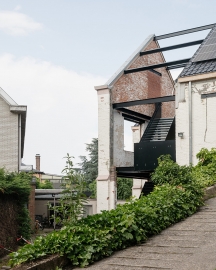 © Stijn Bollaert
© Stijn Bollaert
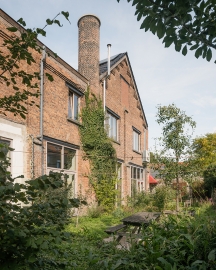 © Stijn Bollaert
© Stijn Bollaert
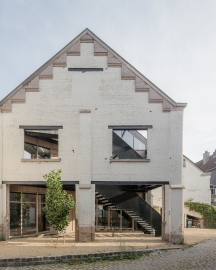 © Stijn Bollaert
© Stijn Bollaert
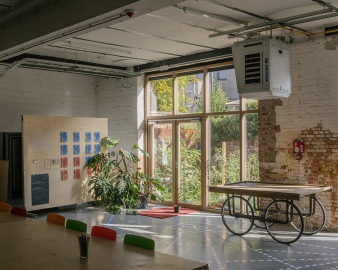 © Stijn Bollaert
© Stijn Bollaert
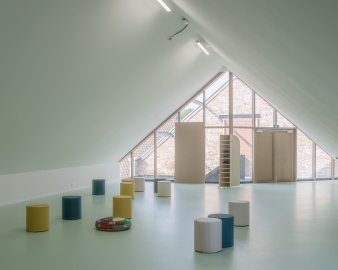 © Stijn Bollaert
© Stijn Bollaert
